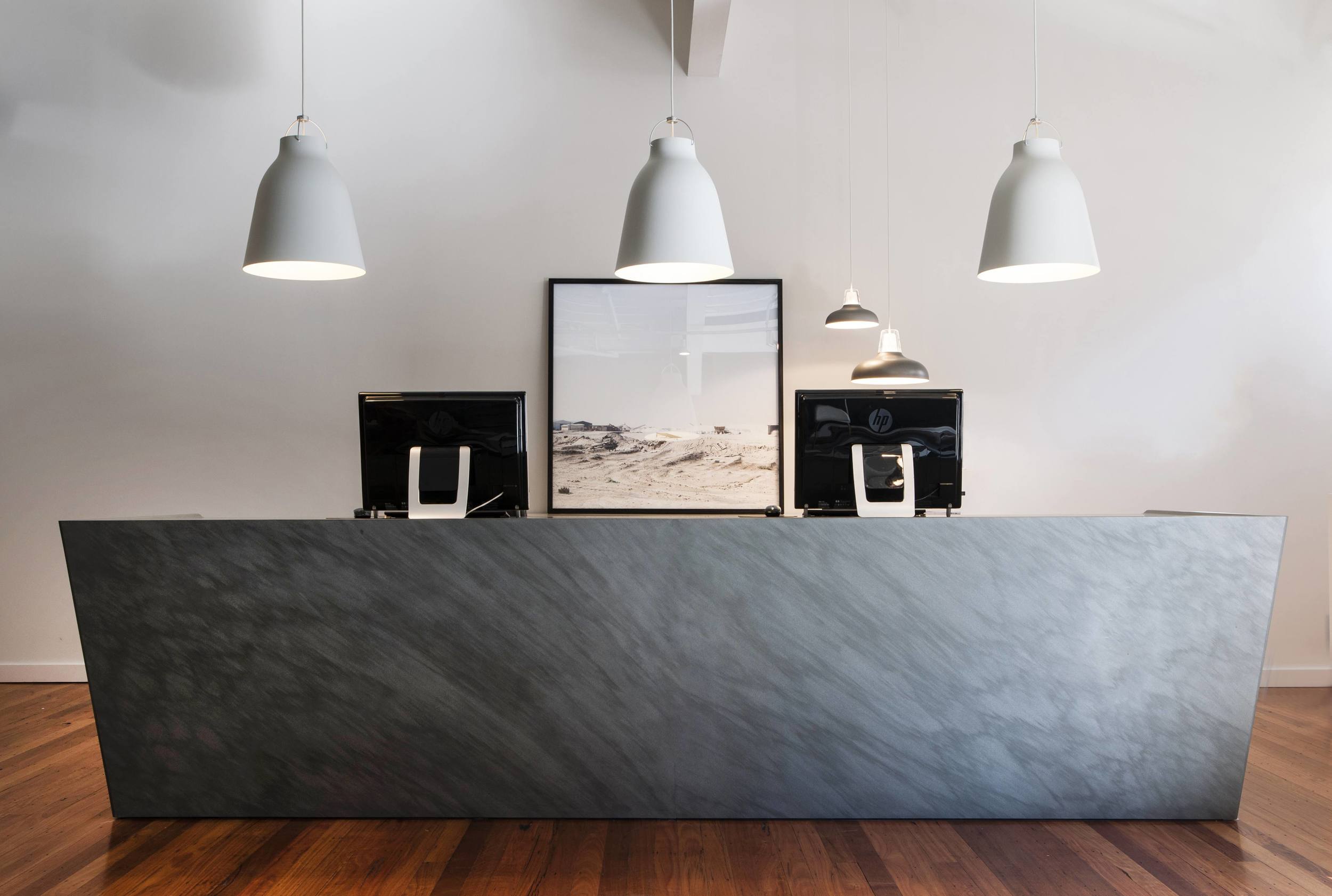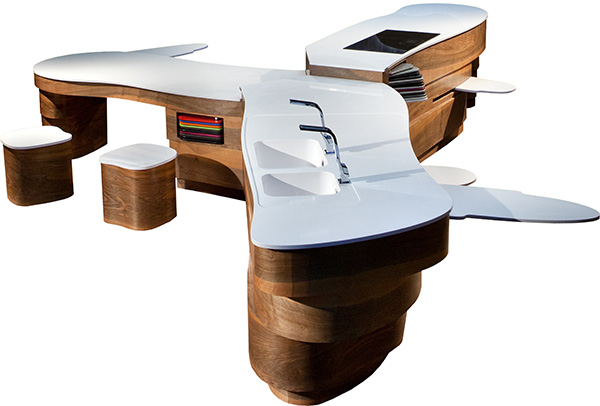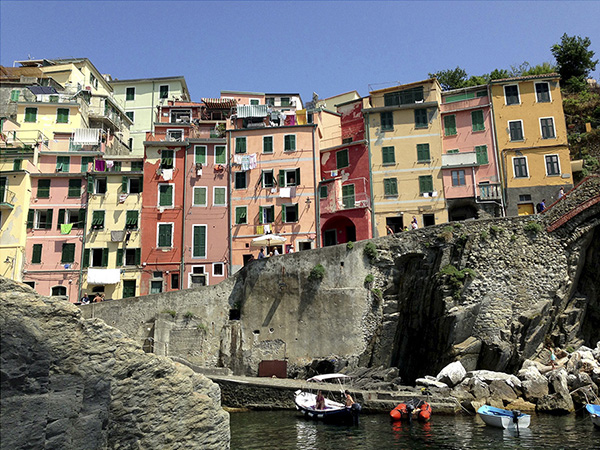Jan Henderson for Architel.tv talks with Lucy Feagins of The Design Files in the first of a two-part interview. The Design Files is Australia's most successful and well-known blog and Lucy talks about the early days working a day job and starting a business, what it takes to keep the blog interesting and new ideas for the future
The Design Files, Lucy Feagins – Part Two
Jan Henderson for Architel.tv talks with Lucy Feagins of The Design Files in the first of a two-part interview. The Design Files is Australia's most successful and well-known blog and Lucy talks about the early days working a day job and starting a business, what it takes to keep the blog interesting and new ideas for the future.
Cox – Philip Rowe
Jan Henderson for Architel.tv interviews Philip Rowe a Director at Cox in Melbourne to about the Sunshine Construction Futures project.
WAF – Part Four
On a recent trip to Singapore to attend WAF, the World Architecture Festival and Inside World Festival of Interiors, Jan Henderson interviewed architects who attended the festival and Dianna Snape videoed the occasions for Architel.tv. In the last of the series Jan talks to Shane Thompson from Shane Thompson Architects, Michael Rayner of Cox Rayner and Ryan Russell and Byron George from Russell and George about their experiences.
WAF – Part Three
On a recent trip to Singapore to attend WAF, the World Architecture Festival and Inside World Festival of Interiors, Jan Henderson interviewed architects who attended the festival and Dianna Snape videoed the occasions for Architel.tv. In Part Three Jan talks to Rachel Neeson from Neeson Murcutt Architects and Cameron Bruhn, Editorial Director at Architecture Media.
Aussies at WAF – Part Two
On a recent trip to Singapore to attend WAF and Inside, Jan Henderson interviewed Australian architects and Dianna Snape videoed the occasions for Architel.tv. In Part Two we talk to Scott Walker, Head of Interior Design at Hassell and Ron Billard, Director of Billard Leece Partnership to hear their thoughts about judging and presenting.
WOHA – Wong Mun Summ
One of the nice surprises when visiting Singapore for WAF for Architel.tv was the opportunity to interview Wong Mun Summ from WOHA. Mun Summ was relaxed, informative and just a really lovely man to talk with and so generous with his time. He spoke at length about WOHA's various projects and in particular the Parkroyal on Pickering. See the interview here.
Aussies at WAF – Part One
On a recent trip to Singapore to attend WAF and Inside, Jan Henderson interviewed Australian architects and Dianna Snape videoed the occasions for Architel.tv. In Part One we talk to David Parkin – CEO of the AIA, Paul Finch – Program Director of WAF and Helen Norrie – Lecturer at UTAS and one of the Creative Directors of the 2014 National Architecture Conference to hear their thoughts about this year's World Architecture Festival.
Interview with Miriam Fanning from MIM Design
Jan Henderson, Interiors Editor at Architel.tv, interviews Miriam Fanning the Principal and founding Director of MIM Design in the second video of the new series for Architel.tv entitled The Designers. There will be more interviews in the following months so watch this space.
Big, beautiful and bespoke
Anyone who has worked with me knows that I have a penchant for stone, bricks, glass, in fact most hard, natural materials and the beautiful tiles and stone available from Artedomus are awe-inspiring. I can talk for hours about the wonders of marble or granite, however, on my trip to Sydney for Saturday in Design I was (almost) speechless when I spied a wonderful piece of furniture that takes natural stone to a whole new level.
Sitting at the entrance of the Corporate Culture Chippendale showroom was a stunning new reception desk made of, yes you guessed it, stone. Designed by the very talented Australian designer Adam Goodrum the desk is made from Bedonia natural stone from Artedomus and is an elegant signature piece for the high-end furniture retailer. Artedomus’s artisan stonemasons worked on the desk for more than one hundred hours and much of this time was spent on site, hand-shaping the complex multi-axis joint at each vertical corner. The three sides of the desk are made from 30mm thick stone positioned to tilt inwards and the finished product is both beautiful and elegant in it's simplicity. All credit must go to Artedomus’s talented stone masons for achieving a flawless result.
Corporate Culture is the destination to shop for architects, designers and anyone who loves beautiful furniture and Goodrum’s reception desk aligns perfectly with the many iconic furniture pieces on show. Artedomus also supplied handcrafted tiles from Inax, Japan and Graniti Fiandre, Italy for specific areas of the showroom.
It’s good to see two leading companies working together to enhance each others products especially when the results are as pleasing as this.
The reception desk at Corporate Culture made from Bedonia stone from Artedomus and designed by Adam Goodrum.
A detail image of the multi-axis joint located at each vertical corner
Interview with Russell and George
Jan Henderson interviews Ryan Russell and Byron George from Melbourne based practice Russell and George. This is the first video in a new series for Architel.tv entitled The Designers. There will be more interviews to follow so watch this space.
Stone innovation
Among the many happenings at Saturday Indesign this year was a special opening. It has been a year and a half since Spanish company Cosentino launched into the Australian market. Their enormous range of quartz stone product for the commercial and domestic markets, hasn’t been in Australia for vey long but already their market share is growing rapidly. To accommodate their expansion they have just moved into a sparkling new showroom situated in a heavenly position in the heart of designerville, Alexandria, on the first floor overlooking O’Riordan Street. Floor to ceiling glass windows on two sides of the space ensures an abundance of natural light and there is enough room to move about in comfort.
I met Gary Isherwood, Area Manager of Cosentino Australia, when he first moved to Sydney and our paths have often crossed since that time. He has worked tirelessly to bring the Cosentino product to prominence in the Asia Pacific region, as the brand was virtually unknown until now. In Europe, however, Cosentino is the leading supplier of quartz stone to the architecture and design markets.
The showroom features a particularly innovative kitchen named Shaping Silestone, designed by the fabulous Campana Brothers. This installation was first exhibited in 2011 at Superstudio Piu during Salone del Mobile in Milan and still looks as fabulous now as it did then. The form imitates a Swiss army knife with Silestone top and retracting leaves of stone to offer additional bench space. The design is innovative and unusual and sits well in its new Australian home.
Cosentino
Design Level 1
69 O’Riordan Street
Alexandria, New South Wales
Shaping Silestone by the Campana Brothers
Dianna Snape's Adventures
Talking with Dianna Snape is always an entertaining and enjoyable affair. This time was no exception. We met for lunch to chat about her recent trip and discuss the highs and lows of being an adventurer extraordinaire.
Over the past four months Dianna has visited Singapore, driven a tuk-tuk from the south to the north of India, journeyed to Tanzania, initiated photography workshops for village children and enjoyed the splendours of northern Italy. To take a holiday is not unusual however a journey of this scope was full of challenges for one of Australia's best architectural photographers.
Dianna felt the call of Africa a year ago and visited for a month. This year she decided to return and combine the trip with a journey across India. Of course photography is an integral part of all Dianna does and through the hundreds of images she has taken we can relive her amazing experience.
To drive across India was an impossible dream but when your vehicle is a tuk- tuk things start to become interesting. Dianna and four friends banded together to make their dream a reality and raise money for Frank Water, www.frankwater.com who provide clean water for the world's poorest communities. The trip called 'The Rickshaw Run', http://www.theadventurists.com/the-adventures/rickshaw-run involves driving 3700 kilometres from Cochin in the south of India to Shillong in the north. Participants have to map their own route and have two weeks to complete the journey. The group drove through rough terrain, visited small villages with little or no amenities and battled the technical intricacies of tuk-tuk engines. Unbelievably they arrived at their destination on time with body and tuk-tuks intact.
Before leaving India Dianna met with her friend and mentor John Gollings, http://www.gollings.com.au. John was in India to document Hampi, http://whc.unesco.org/en/list/241 a village in northern Karnataka state and Dianna assisted in the process.
Tanzania was a different story. Dianna travelled back to the village she had visited a year before to set up camp. For the first month she immersed herself in daily Swahili lessons and taught staff of a safari company to use iPads and software programs. In the second month, Dianna established a photography workshop in Arusha at Shika's Watoto Wanaweza Centre, http://www.shika.org.uk/ a community centre for under privileged children. The refuge provides hot meals and a safe environment for children from disparate and difficult backgrounds and offers a safe haven for them to play and talk about their problems. Dianna became teacher and friend and lived in the village with her students. Of course an undertaking of this magnitude requires planning and the help of others and through the generous support of Craig Robinson, from Ted's Professional, http://www.teds.com.au/professional who supplied twenty-five reconditioned cameras, and other colleagues who donated memory cards and laptops, Dianna was able to facilitate the photography lessons. Some of the students have shown outstanding promise but talented or not the students have had the opportunity to discover the world from behind the lens.
Moving on to northern Italy it was time for Dianna to relax and catch up with family. Lots of fine Italian food and wine were on the menu and the beautiful scenery of the Cinque Terre walk helped feed the soul.
Dianna has now returned to her studio in St Kilda and is already back at work busy as ever capturing images of Australia's best architecture.
Some people just dream of exploring, others do. Dianna is intrepid and follows her heart and we are all the richer for her journey.
Post note
A little piece of my family travelled with Dianna on her adventure. My father Jack was a photographic enthusiast and accumulated an array of Hasselblad, Leica, Minolta and Nikon cameras over his lifetime. His constant snapping at family occasion was greeted with dread by my brothers and I, but it's funny how things change. I'm now so glad he documented our lives and the occasions that marked them. On his passing I was left with a legacy of non-digital cameras, accessories and camera bags. I turned to Dianna to sort the wheat from the chaff. Most of the items were marked for the museum but my father's camera bags were highly prized. Dianna chose Dad's favourite green camera bag to be her constant companion throughout her travels. It gave me great satisfaction to know that dad's bag was in use and I just know that he would have loved to be in the company of a gorgeous blonde who loved to take photographs and was traveling the globe.
Photo @Dianna Snape
Photo @Dianna Snape
Photo @Dianna Snape
Photo @Dianna Snape
Photo @Dianna Snape
Photo @Dianna Snape
Photo @Dianna Snape
Photo @Dianna Snape
Photo @Dianna Snape
Photo @Dianna Snape
Dad's camera bag with Dianna and friend






























